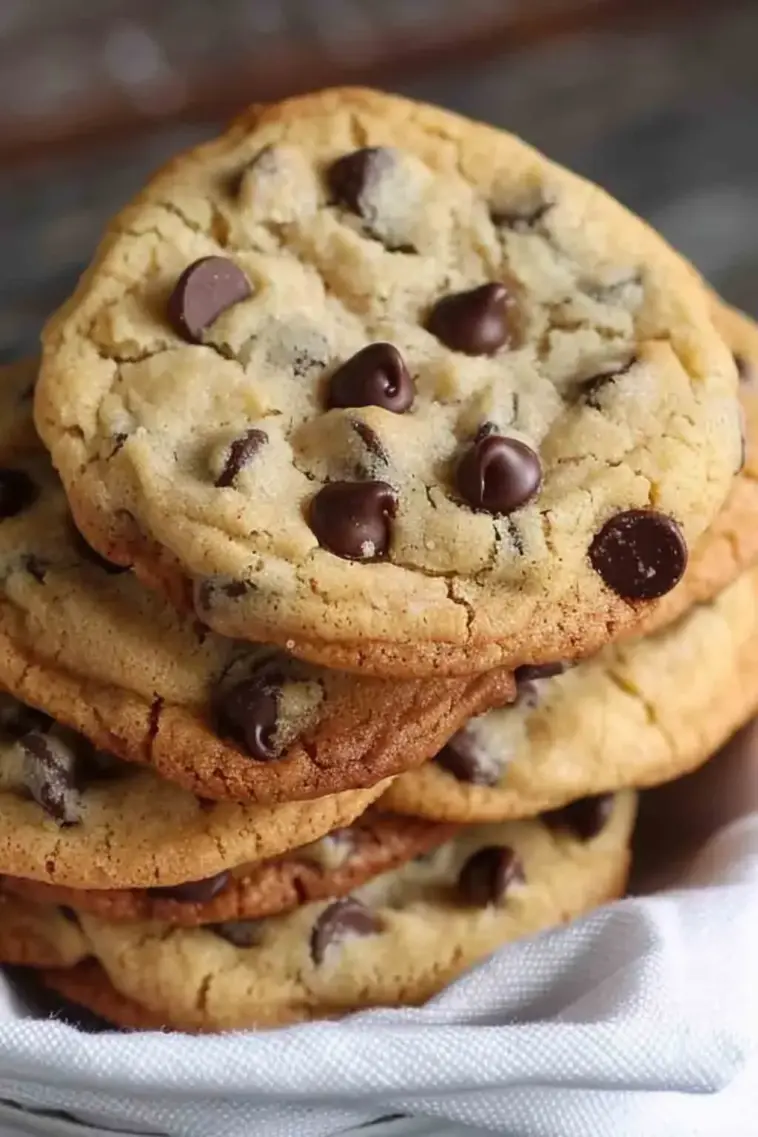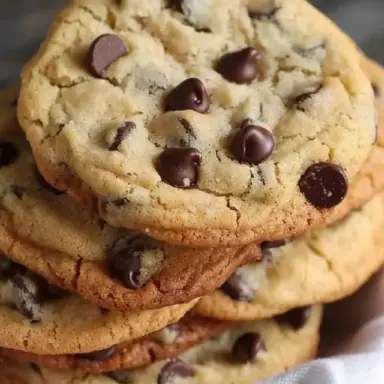Cookies have a rich history dating back centuries. Originating in Persia in the 7th century AD, cookies traveled across continents, adapting culturally along the way. Initially, cookies were simple test cakes used to gauge oven temperature. Eventually, these small treats evolved, incorporating diverse ingredients like nuts, spices, and chocolate. Today, cookies are celebrated globally, enjoyed as daily snacks, festive treats, and comforting homemade indulgences. Their immense popularity reflects their simplicity and versatility, enabling endless flavor variations and cultural adaptations. Influential culinary sources like Bon Appétit and Vogue often highlight their timeless appeal.
Essential Ingredients in Cookie Recipes
Understanding your ingredients is critical to baking great cookies:
- Flour: Determines texture—all-purpose flour for balanced results, bread flour for chewier textures, and cake flour for delicate, soft cookies.
- Sugars: Granulated sugar adds crispness, brown sugar enhances moisture and chewiness, while alternatives like honey or coconut sugar can adjust sweetness and moisture content. Learn more from Food & Wine.
- Fats: Butter contributes rich flavor and tender texture; margarine creates softer cookies but may lack depth of flavor.
- Leavening Agents: Baking soda for browning and spread; baking powder for puffiness.
- Eggs: Bind ingredients, provide structure, and maintain moisture.
- Flavorings: Vanilla extract for classic sweetness; spices such as cinnamon and nutmeg for warmth and complexity.
Science of Baking Cookie
Successful cookie baking involves key scientific principles:
- Ingredient ratios greatly impact cookie texture and spread. Slight variations can significantly alter outcomes.
- Temperature management is crucial—cold dough limits spread, whereas room temperature ingredients blend more evenly.
- Baking involves chemical reactions such as caramelization, creating flavor depth and the Maillard reaction for browning and aroma development. Detailed scientific insights can be found at Better Homes & Gardens.
Understanding these basics enables consistent baking success.
Tools and Equipment for Baking Cookie
Having the right baking tools is essential for perfect cookies:
- Mixing Bowls: Choose sturdy bowls for easy blending of ingredients.
- Measuring Tools: Accurate measuring cups and spoons ensure precise ingredient ratios.
- Mixers: Stand mixers simplify creaming butter and sugar; hand mixers offer flexibility.
- Baking Sheets: Invest in durable, non-stick or aluminum sheets for even baking.
- Parchment Paper and Silicone Mats: Facilitate easy removal of cookies and prevent sticking.
- Cooling Racks: Essential for proper air circulation, helping cookies cool evenly and maintain texture.
- Storage Containers: Airtight containers preserve freshness and prevent cookies from becoming stale.
Step-by-Step Guide to Baking Classic Chocolate Chip Cookie
Creating delicious chocolate chip cookies is easy with this detailed guide:
Preparation:
- Gather all necessary ingredients: flour, sugars, butter, eggs, vanilla extract, baking soda, salt, and chocolate chips.
- Preheat your oven to 350°F (175°C) and line baking sheets with parchment paper.
Mixing the Dough:
- Cream butter with granulated and brown sugars until fluffy.
- Add eggs one at a time, mixing thoroughly, then incorporate vanilla extract.
- In a separate bowl, whisk flour, baking soda, and salt.
- Gradually add dry ingredients to the wet mixture, stirring gently until just combined.
- Fold in chocolate chips evenly throughout the dough.
Portioning and Baking:
- Use a cookie scoop or tablespoon to portion uniform dough balls onto prepared baking sheets.
- Ensure ample spacing (2-3 inches) between dough balls to prevent cookies from merging.
- Bake cookies for approximately 10-12 minutes, until edges are golden but centers remain soft.
Cooling and Storing:
- Allow cookies to cool slightly on baking sheets before transferring to cooling racks.
- Cool completely before placing in airtight storage containers to maintain ideal freshness and texture.
Popular Variations of Cookie Recipes
Explore delicious variations to enhance your baking repertoire:
- Sugar Cookies:
- Simple ingredients ideal for decorating.
- Rolling dough evenly and cutting festive shapes easily.
- Oatmeal Cookies:
- Incorporate oats for added texture and hearty flavor.
- Popular add-ins include raisins, chocolate chips, or chopped nuts.
- Peanut Butter Cookies:
- Classic recipes feature a distinctive crisscross pattern.
- Achieve a balance between sweet and salty flavors.
- Double Chocolate Cookies:
- Intensify chocolate flavor with cocoa powder and chocolate chunks.
- Aim for a rich, fudgy texture by controlling baking time.
Healthier Alternatives and Dietary Adjustments
Make delicious cookies with dietary needs in mind:
- Gluten-Free Options:
- Substitute traditional flour with almond or coconut flour.
- Use binding ingredients like xanthan gum to maintain cookie structure.
- Vegan Substitutions:
- Replace eggs with flaxseed or chia seed mixtures.
- Opt for plant-based butter alternatives and dairy-free milk.
- Reducing Sugar and Fat:
- Utilize natural sweeteners such as honey, maple syrup, or stevia.
- Applesauce or yogurt can partially replace fats, maintaining moisture and reducing calories.
Troubleshooting Common Cookie Baking Issues
Solve common cookie baking challenges:
- Cookies Spreading Too Much:
- Caused by warm dough, excess sugar, or insufficient flour. Chill dough before baking and measure ingredients precisely.
- Cookies Not Spreading Enough:
- May result from too much flour or overly cold dough. Slightly reduce flour or allow dough to reach room temperature before baking.
- Overly Hard or Crispy Cookies:
- Typically caused by extended baking times or high sugar ratios. Shorten baking time or slightly reduce sugar.
- Uneven Baking:
- Ensure uniform dough size and proper oven rack positioning. Rotate baking sheets halfway through baking for even heat distribution.
FAQs Based on Common Queries
- How do I keep cookies soft after baking?
- Store in airtight containers with bread slices to retain moisture.
- Can I freeze cookie dough for later use?
- Yes, portion dough into balls, freeze on baking sheets, then transfer to freezer-safe bags for easy baking later.
- Why did my cookies turn out cakey instead of chewy?
- Too many eggs or excess leavening agents typically lead to a cakey texture. Adjust proportions accordingly.
- Is it necessary to chill cookie dough before baking?
- Chilling enhances flavor depth and helps control dough spreading, improving texture.
- How can I make my cookies more flavorful?
- Use quality vanilla, spices, brown butter, or premium chocolate for richer flavors.
Conclusion and Encouragement to Experiment
Baking cookies is both an art and a joyful experience. Embrace creativity by experimenting with different flavors and textures. Don’t fear mistakes—each baking session is an opportunity to refine your skills. Ultimately, sharing your delicious creations brings warmth and happiness, making cookie baking a rewarding and beloved pastime.
The Best Recipe For Cookie
Equipment
- Mixing bowls
- Hand mixer or stand mixer
- Measuring cups and spoons
- Silicone baking mats or parchment paper
- Cookie scoop or tablespoon
- Baking sheets
- Cooling rack
- Airtight container (for storage)
Ingredients
- 2 ¼ cups all-purpose flour
- 1 tsp baking soda
- ½ tsp salt
- 1 cup 2 sticks unsalted butter, softened
- ¾ cup granulated sugar
- ¾ cup brown sugar packed
- 2 large eggs
- 2 tsp pure vanilla extract
- 2 cups semi-sweet chocolate chips or chunks
Instructions
- Preheat oven to 350°F (175°C). Line baking sheets with parchment or silicone mats.
- In a medium bowl, whisk together flour, baking soda, and salt.
- In a large bowl, cream butter, granulated sugar, and brown sugar until light and fluffy.
- Beat in eggs one at a time, then stir in vanilla extract.
- Gradually blend in the dry ingredients.
- Fold in the chocolate chips until evenly distributed.
- (Optional) Chill dough for 30 minutes for thicker cookies.
- Drop dough by tablespoon or cookie scoop onto baking sheets, spacing 2 inches apart.
- Bake for 10–12 minutes, or until edges are golden. Centers may look soft—that's perfect!
- Let cookies rest for 5 minutes, then transfer to a wire rack to cool completely.
Notes
- For softer cookies, use more brown sugar than white sugar.
- Chilling the dough enhances flavor and reduces spreading.
- Add ½ tsp of cinnamon for a subtle spiced flavor twist.
- Substitute gluten-free flour blend for a gluten-free version.
- Store cookies in an airtight container for up to 5 days or freeze dough balls for up to 3 months.


